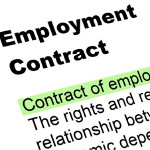Practical Law and the Wage & Hour Defense Institute (WHDI) will present a free, 75-minute webinar providing guidance on the U.S. Department of Labor’s final rule, updating the regulations governing white collar exemptions under the federal Fair Labor Standards Act (FLSA).
The webinar will be Wednesday, June 1, beginning at 1 p.m. EDT.
The rule, which takes effect Dec. 1, 2016, doubles the minimum weekly salary threshold required for the exempt classification of executive, administrative, professional, and computer professional employees. In addition, the new rule increases the minimum annual compensation and weekly salary requirements for exempt highly compensated employees (HCEs), and the special salary levels for employees in the motion picture industry and employees in American Samoa.
Moderator Paul Bittner of Ice Miller LLP (Columbus, OH), and speakers Susan N. Eisenberg of Cozen O’Connor (Miami) and Francis X. Neuner, Jr. of Spencer Fane (St. Louis), all members of the Wage & Hour Defense Institute, will discuss what employers must do now to ensure compliance with the final rule, including:
Counting bonuses and incentive payments toward satisfying the new minimum salary.
- Reclassifying exempt employees who no longer satisfy the salary threshold.
- Communicating reclassification decisions.
- Planning for scheduled adjustments to the salary threshold.
- Addressing pay increases and the effect on an employee’s exempt status.
- Evaluating the risk of improper classification.
- Understanding what the DOL’s final rule does not change.
A short Q&A session will follow.
Presenters:
- Paul Bittner, Partner, Ice Miller LLP (Columbus, OH)
- Susan N. Eisenberg, Member, Cozen O’Connor (Miami)
- Francis X. (Frank) Neuner, Jr., Partner, Spencer Fane (St. Louis)
- Suzanne K. Brown, Senior Legal Editor, Practical Law Labor & Employment (Moderator)
CLE credit is available for: Arizona, California, Colorado, Georgia, Hawaii, Illinois, Indiana, Missouri, New Hampshire, New Jersey, New York, North Carolina, Pennsylvania, Vermont, Washington. CLE credit is being sought for: Minnesota, Oregon, Tennessee, Texas, Virginia CLE credit can be self-applied for in: Florida
Register for the webinar.
 Wal-Mart Stores Inc. would have to spend an additional $4.95 billion if it were to raise the minimum wage for its hourly employees in the United States to $15 per hour from the current $10 per hour, according to an estimate by the UC Berkeley Center for Labor Research, Reuters is reporting.
Wal-Mart Stores Inc. would have to spend an additional $4.95 billion if it were to raise the minimum wage for its hourly employees in the United States to $15 per hour from the current $10 per hour, according to an estimate by the UC Berkeley Center for Labor Research, Reuters is reporting.

 A fundamental principle of contract law is that a written contract is an agreement in writing that serves as proof of the parties’ obligations, writes
A fundamental principle of contract law is that a written contract is an agreement in writing that serves as proof of the parties’ obligations, writes  Opening arguments kicked off Thursday in a long-awaited National Labor Relations Board case that could, for the first time ever, put McDonald’s on the hook for labor violations committed by the company’s franchised restaurants, reports
Opening arguments kicked off Thursday in a long-awaited National Labor Relations Board case that could, for the first time ever, put McDonald’s on the hook for labor violations committed by the company’s franchised restaurants, reports